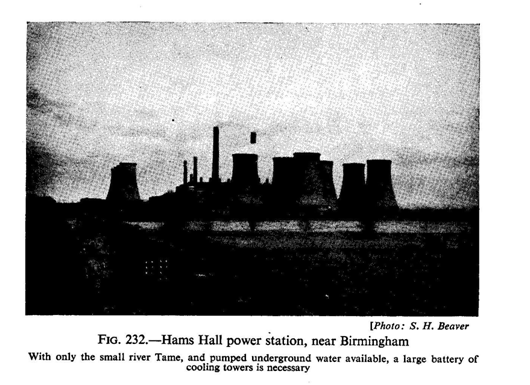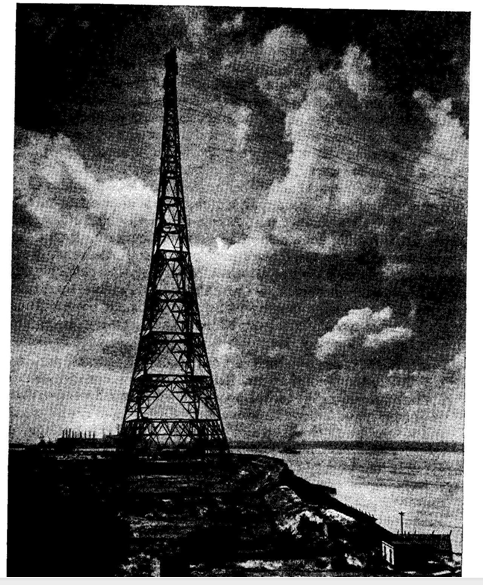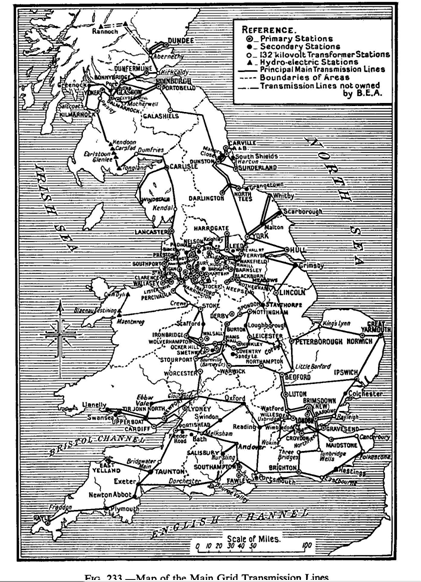

Until 1926 the systems of supply of electricity in this country were the result of unplanned growth. Local legislation and piecemeal development had resulted in the existence of numerous isolated area supplies with a great variety of generating plant, frequencies, and pressures. Two inevitable consequences followed—a very wide variation in the cost to the consumer of a unit of electricity and a paralysing or stultifying effect on large scale developments. The domestic consumer might have been called upon to pay anything from d. or even less per unit to is. per unit—occasionally more. This book was written in the London School of Economics which, owing to rapid growth, came to include buildings adjacent, but supplied with electricity from two sources. Thus, in some rooms the voltage was 100, in others 210; in some it was direct current, in others alternating! The Electricity Supply Act of 1926 provided for the setting up of a Central Electricity Board. Within this national scheme electricity is to be generated only at those stations where generation can be most economically carried out. These “selected stations” remain the property of the municipal corporations or companies who own them, but the national network of transmission lines connecting them is the property of the Central Board. This network of lines for the transmission of energy at high tension (commonly known as the Grid) has rapidly become familiar through the erection of pylons in all parts of the country, and over these lines takes place the “wholesale” transmission of the current to the various local distributing undertakings.
The main location factors1
involved in the distribution of power stations are (a) proximity to the
populous area which the station is designed to serve; this is still important,
as the map shows, but with the possibility of large-scale transmission of power
at high tension over long distances it is less so than formerly;
(b)
the availability of cheap coal, usually of inferior
quality; water-transport facilities, inland or coastwise, are of great
importance. In addition to these
location
factors, there are two
site
factors of importance, the availability of cooling
water, usually many millions of gallons per hour, and cheap land with room for
expansion and for railway sidings and ash disposal. Water-front sites will again
be important; if adequate river or sea water is not available, large concrete
cooling towers will have to be built (Fig. 232), so that the water can be used
over and over again.
A glance at the map will show that the primary generating stations fall into six
main groups (apart from the Scottish hydro-electric plants which are referred to
elsewhere, see p. 102): (i) the London area, where some four-fifths of the power
output comes from Thames-side stations; (ii) South Wales and
Bristol, largely at coastal or riverine sites; (iii) the Midlands, divided
into a western group, With only the small river Tame, and pumped underground
water available, a large battery of cooling towers is necessary
largely peripheral to the main Birmingham-Black Country conurbat ion
(e.g.
Hams Hall, Stourport, Ironbridge), and an eastern
group, mostly located along the river Trent,
(e.g.
the new stations at Drakelow and Staythorpe); (iv)
Lancashire and Yorkshire, where river-sites are again important; (v) north-east
England—Tyneside and Teesmouth; (vi) central Scotland, notably Clydeside. The
output of electric current increased more than ten-fold between 1920 and 1950,
and the expansion shows little signs of slowing down.


 |
|